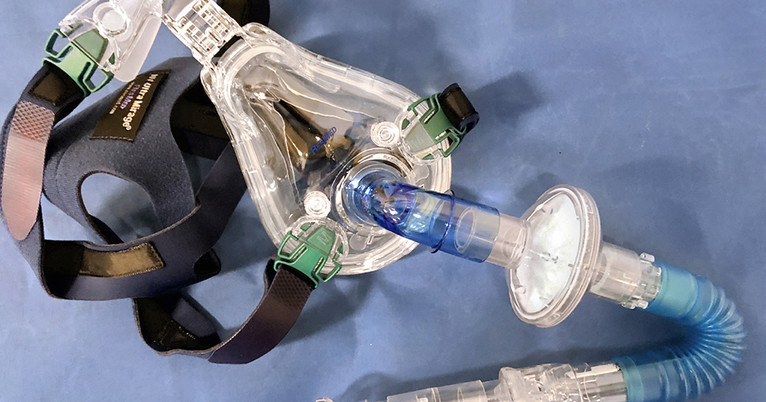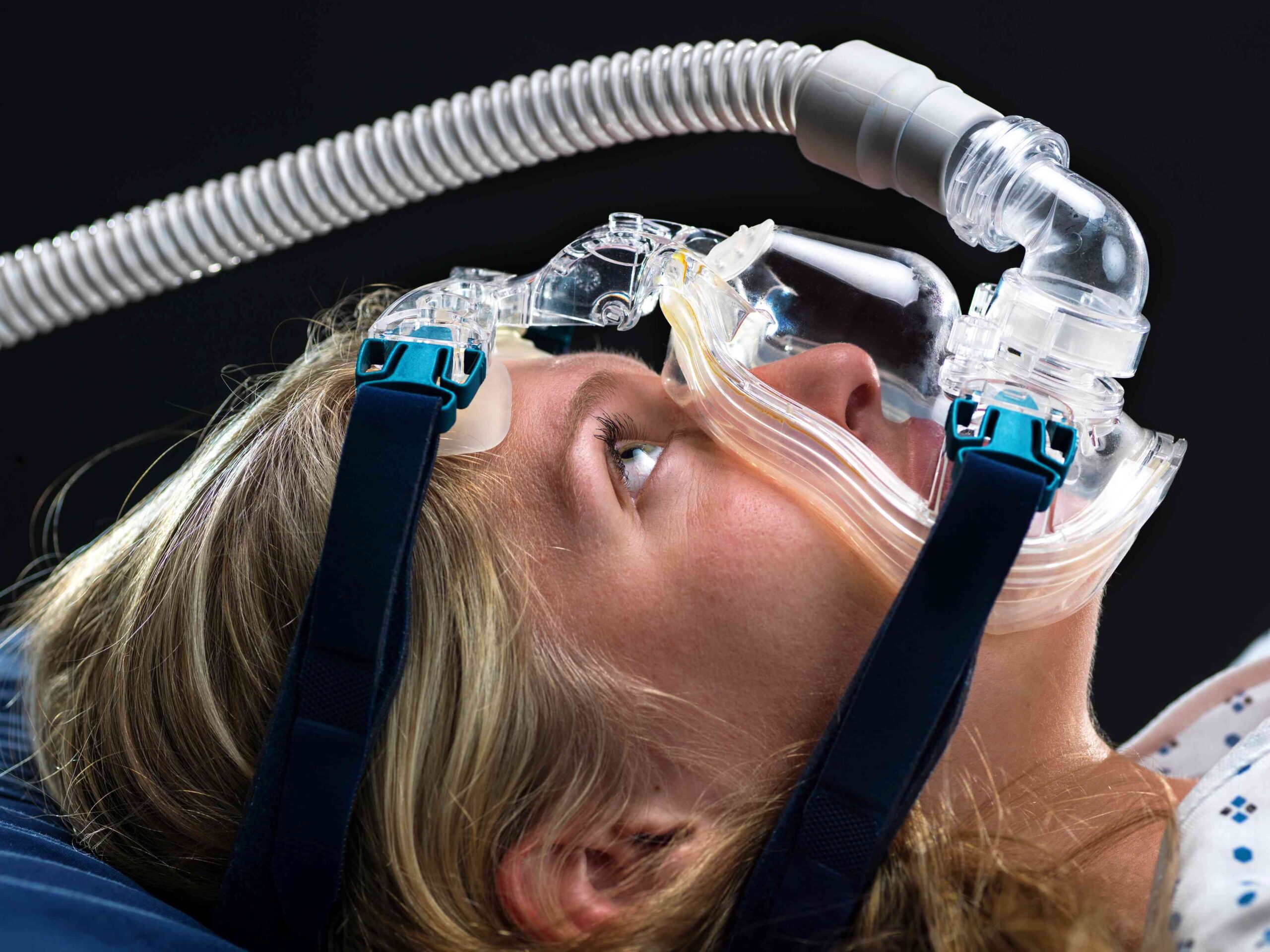For those who suffer from Sleep Apnea, CPAP therapy can be a challenge to adapt to. You’ll need to find a CPAP machine and mask that works for you, and then you’ll have to train yourself to use them while you sleep. You might be wondering things like, “What size mask do I need?” on your quest to find the perfect face covering. What size mask should I get? How do I fix the leak in my CPAP mask? How can I tell if the mask doesn’t fit properly?
Finding the right CPAP mask can be challenging, and can cause a host of issues, including but not limited to: facial marks, dry mouth, and even hair loss. The likelihood of adapting well to CPAP therapy is dramatically improved by a mask that fits well.
Following the acquisition of your CPAP mask, please consider the following simple suggestions for optimizing your fit:
- Can you slip a finger under the mask’s strap?
If you can fit a finger under each strap, definitely it’s probably a good fit. If you can slide more than a finger under the mask’s strap, it’s probably not fit enough and could lead to leaks. A mask that is too tight can cause pressure sores and even mild headaches, so make sure you can fit at least one finger under the strap. Put on your mask while using your CPAP machine, and adjust the straps until you can fit one finger under them without any air can escape.

- Learn your typical sleeping positions.
Are you a restless sleeper? Do you favour the side or back when you sleep? Maybe you sleep with your mouth open, and you always wake up with a dry mouth. It’s important to know how you normally sleep in order to determine if a mask will work for you. Everyone has a different experience falling asleep, and the same holds true for your mask. If you have any questions about which mask would be best for you, feel free to contact us at Air Liquide Healthcare.
- Make sure there are no leaks
It’s likely that your CPAP mask isn’t doing its job if your machine is reporting leaks. A leaking CPAP mask could be the result of a number of factors, including the accumulation of oils and bacteria on the mask, which could compromise the seal, or the mask not being the right size for your face, facial hair, or sleeping position. Maintaining your CPAP machine and cleaning the mask on a regular basis can make it more comfortable to use while you sleep. This is because when we lay down, our facial muscles relax and change slightly, and when we relax, this effect is amplified.
- It’s important to size things up properly
Different styles of CPAP masks are available to accommodate a wide range of wearers, from those who wear glasses to those who sport a full beard. Brands like ResMed provide multiple mask sizes because they think everyone should have access to CPAP therapy. If you’re having comfort issues with your CPAP mask, we recommend that you should relate it with your Sleep Coach.
- Remove dust and dirt from the cushion
Anything that is constantly touching your face should be kept clean. The oils and bacteria on our faces can shorten the life of a mask and even cause a leak if you don’t plan to be replacing it regularly. Cleaning a CPAP mask is as easy as wiping down the mask and cushions with a warm, soapy cloth. After washing, your mask’s sealing power should improve if you let it air dry during the day or store it somewhere dry for a few hours before using it again at night.
Patience and time are essential.
It’s important to keep in mind that getting used to sleeping with a CPAP mask can take some time. Put on your CPAP mask and unwind for a while before turning in for the night. Maintaining healthy sleep routines, including reducing caffeine intake and increasing physical activity, is encouraged during this time of transition.

There are five indications that your CPAP mask needs a replacement.
Maintaining your CPAP (Continuous Positive Airway Pressure) machine on a regular basis will keep it in top working condition, allowing you to get the most out of your treatment for sleep apnea. This includes replacing your mask at the appropriate times.
You should replace your CPAP mask every 6-12 months and your headgear at the same intervals, but here are five signs that it’s time to do so sooner rather than later.
- When You Start Seeing New Outcomes
If you have noticed a decline in the effectiveness of your nightly therapy and are not waking up feeling as refreshed as you once did, it may be time to replace your CPAP mask.
- The Seal’s Quality
The mask’s seal, which prevents air from escaping through your nose and mouth, starts out clear and strong but gradually turns yellow, loses elasticity, and eventually can’t even form a tight seal around your face. This is because your mask, and by extension, your therapy, may not work as well if your skin’s natural oils have built up on its surface. Investing in a replacement CPAP mask is a good way to make sure the seal is intact.
- Having a Dry Mouth When You Wake Up
If you wake up with a dry mouth, it could be time to switch out your mask. This can happen if the mask has air leaks that cause a change in air pressure, requiring you to adjust the position of your mouth throughout the night.
- It’s Getting Uncomfortable to Wear
When a CPAP mask wears down, it can become loose, prompting the wearer to tighten it more and more with each use. Overtightening the mask when it no longer forms a tight seal can cause temporary grooves or irritation to the skin.
- The Elastic Has Been Damaged, Is Exposed, or Has Lost Its Form
A mask’s elastic fabric deteriorates over time from repeated sweating, movement, tightening, and cleaning. Getting a new mask might be necessary if the old one has become very thin, is torn, or has lost its shape.
In order to treat your sleep apnea and allow you to have more restful nights of sleep, your CPAP machine was created. However, your therapy outcomes, comfort, and hygiene could all suffer if you keep using a CPAP mask that has long since worn out.
For more information or for consultation, contact us via our website at Air Liquide Healthcare.
